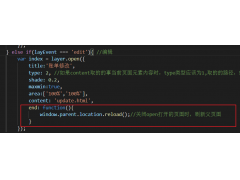parseInt vs unary plus, when to use which?(parseInt vs unary plus,什么时候用哪个?)
问题描述
这行有什么区别:
var a = parseInt("1", 10); // a === 1
还有这一行
var a = +"1"; // a === 1
这个 jsperf 测试 表明一元运算符在当前的 chrome 版本中要快得多,假设它是针对 node.js 的!?
This jsperf test shows that the unary operator is much faster in the current chrome version, assuming it is for node.js!?
如果我尝试转换不是数字的字符串都返回 NaN:
If I try to convert strings which are not numbers both return NaN:
var b = parseInt("test" 10); // b === NaN
var b = +"test"; // b === NaN
那么我什么时候应该更喜欢使用 parseInt 而不是一元加号(尤其是在 node.js 中)???
So when should I prefer using parseInt over the unary plus (especially in node.js)???
edit:和双波浪号运算符~~有什么区别?
edit: and what's the difference to the double tilde operator ~~?
推荐答案
嗯,这里有一些我知道的区别:
Well, here are a few differences I know of:
一个空字符串
""求值为0,而parseInt求值为NaN.IMO,空白字符串应该是NaN.
An empty string
""evaluates to a0, whileparseIntevaluates it toNaN. IMO, a blank string should be aNaN.
+'' === 0; //true
isNaN(parseInt('',10)); //true
一元 + 的行为更像 parseFloat,因为它也接受小数.
The unary + acts more like parseFloat since it also accepts decimals.
parseInt 在看到非数字字符时停止解析,例如打算作为小数点的句点 ..
parseInt on the other hand stops parsing when it sees a non-numerical character, like the period that is intended to be a decimal point ..
+'2.3' === 2.3; //true
parseInt('2.3',10) === 2; //true
parseInt 和 parseFloat 解析并构建字符串从左到右.如果他们看到无效字符,则返回已解析(如果有)为数字的内容,如果没有被解析为数字,则返回 NaN.
parseInt and parseFloat parses and builds the string left to right. If they see an invalid character, it returns what has been parsed (if any) as a number, and NaN if none was parsed as a number.
另一方面,如果整个字符串不可转换为数字,则一元 + 将返回 NaN.
The unary + on the other hand will return NaN if the entire string is non-convertible to a number.
parseInt('2a',10) === 2; //true
parseFloat('2a') === 2; //true
isNaN(+'2a'); //true
如 @Alex K.、parseInt 和 的评论中所见>parseFloat 将按字符解析.这意味着十六进制和指数符号将失败,因为 x 和 e 被视为非数字组件(至少在 base10 上).
As seen in the comment of @Alex K., parseInt and parseFloat will parse by character. This means hex and exponent notations will fail since the x and e are treated as non-numerical components (at least on base10).
一元 + 会正确转换它们.
The unary + will convert them properly though.
parseInt('2e3',10) === 2; //true. This is supposed to be 2000
+'2e3' === 2000; //true. This one's correct.
parseInt("0xf", 10) === 0; //true. This is supposed to be 15
+'0xf' === 15; //true. This one's correct.
这篇关于parseInt vs unary plus,什么时候用哪个?的文章就介绍到这了,希望我们推荐的答案对大家有所帮助,也希望大家多多支持编程学习网!
本文标题为:parseInt vs unary plus,什么时候用哪个?


- 为什么我的页面无法在 Github 上加载? 2022-01-01
- 如何向 ipc 渲染器发送添加回调 2022-01-01
- 如何显示带有换行符的文本标签? 2022-01-01
- 在不使用循环的情况下查找数字数组中的一项 2022-01-01
- 为什么悬停在委托事件处理程序中不起作用? 2022-01-01
- 是否可以将标志传递给 Gulp 以使其以不同的方式 2022-01-01
- 我不能使用 json 使用 react 向我的 web api 发出 Post 请求 2022-01-01
- 如何调试 CSS/Javascript 悬停问题 2022-01-01
- 使用 iframe URL 的 jQuery UI 对话框 2022-01-01
- 从原点悬停时触发 translateY() 2022-01-01









